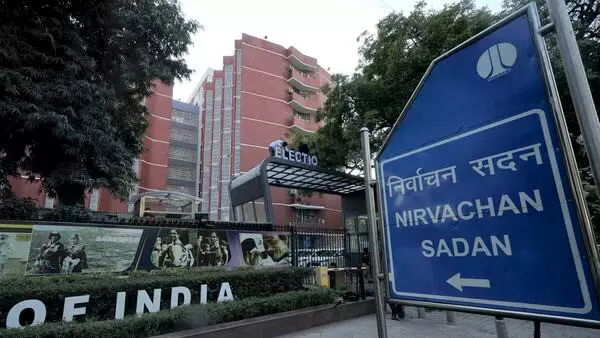ECI Launches Tech-Driven System for Faster Post-Poll Reports
The Index Card is a non-statutory, post-election Statistical Reporting Format developed by the ECI to promote accessibility of election-related data at the constituency level

Election Commission of India (ECI) (PTI file image)
NEW Delhi: The Election Commission of India (ECI) on Thursday said that it has streamlined a technology-driven system to generate Index Cards and various statistical reports after the conduct of the elections. This upgraded mechanism replaces the traditional manual methods, which were often time-consuming and prone to delays.
By leveraging automation and data integration, the new system ensures faster reporting, the ECI said.
The Index Card is a non-statutory, post-election Statistical Reporting Format developed by the ECI to promote accessibility of election-related data at the constituency level for all stakeholders, including researchers, academia, policymakers, journalists, and the general public.
Designed to disseminate data across multiple dimensions, such as candidates, electors, votes polled, votes counted, party-wise and candidate-wise vote share, gender-based voting patterns, regional variations, and performance of political parties, the Index Card forms the foundation for generating about 35 Statistical Reports for Lok Sabha elections and 14 for State Assembly elections.
These reports cover variables like state, parliamentary and assembly constituency-wise elector details, number of polling stations, voter turnout, participation of women electors, performance of parties, winning candidates' analysis, detailed constituency-wise results, and summary data reports.
By leveraging automation and data integration, the new system ensures faster reporting, the ECI said.
The Index Card is a non-statutory, post-election Statistical Reporting Format developed by the ECI to promote accessibility of election-related data at the constituency level for all stakeholders, including researchers, academia, policymakers, journalists, and the general public.
Designed to disseminate data across multiple dimensions, such as candidates, electors, votes polled, votes counted, party-wise and candidate-wise vote share, gender-based voting patterns, regional variations, and performance of political parties, the Index Card forms the foundation for generating about 35 Statistical Reports for Lok Sabha elections and 14 for State Assembly elections.
These reports cover variables like state, parliamentary and assembly constituency-wise elector details, number of polling stations, voter turnout, participation of women electors, performance of parties, winning candidates' analysis, detailed constituency-wise results, and summary data reports.
( Source : Deccan Chronicle )
Next Story

